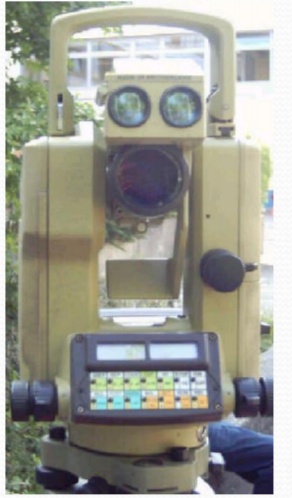THEODOLITE SURVEYING
The system of surveying in which the angles are measured with the help of a theodolite, is called Theodolite surveying.
• The theodolite is used to measure horizontal and vertical angles. The accuracy with which these angles can be measured ranges from 5mins to 0,1 secs. It is a very important instrument in plane surveying.
Use of theodolite:
} Mapping applications and in the construction industry…
} Measurement of Horizontal and vertical angle
} Measurement of magnetic bearing of lines
} Locating points on line
} Prolonging survey lines
} Determining difference in elevation
} Setting out curves
} Aligning tunnels
} Mining works etc.
TRANSIT VERNIER THEODOLITE
CLASSIFICATION OF THEODOLITES
Theodolites may be classified as ;
A.
i) Transit Theodolite.
ii) Non Transit Theodolite.
B.
i) Vernier Theodolites.
ii) Micrometer Theodolites.
A. Transit Theodolite:
A theodolite is called a transit theodolite when its telescope can be transited i.e revolved through a complete revolution about its horizontal axis in the vertical plane, whereas in a-
Non-Transit type : the telescope cannot be transited. They are inferior in utility and have now become obsolete.
B. Vernier Theodolite:
For reading the graduated circle if verniers are used ,the theodolite is called as a Vernier Theodolite.
Whereas,
Micrometer Theodolite: if a micrometer is provided to read the graduated circle the same is called as a
Vernier type theodolites are commonly used .
SIZE OF THEODOLITE:
A theodolite is designated by diameter of the graduated circle on the lower plate.
The common sizes are 8cm to 12 cm while 14 cm to
Greater accuracy is achieved with larger theodolites as they have bigger graduated circle with larger divisions hence used where the survey works require high degree of accuracy.
MEASUREMENT OF HORIZONTAL ANGLES:
1) Ordinary Method
2) Repetition Method
3) Reiteration Method











0 Comments